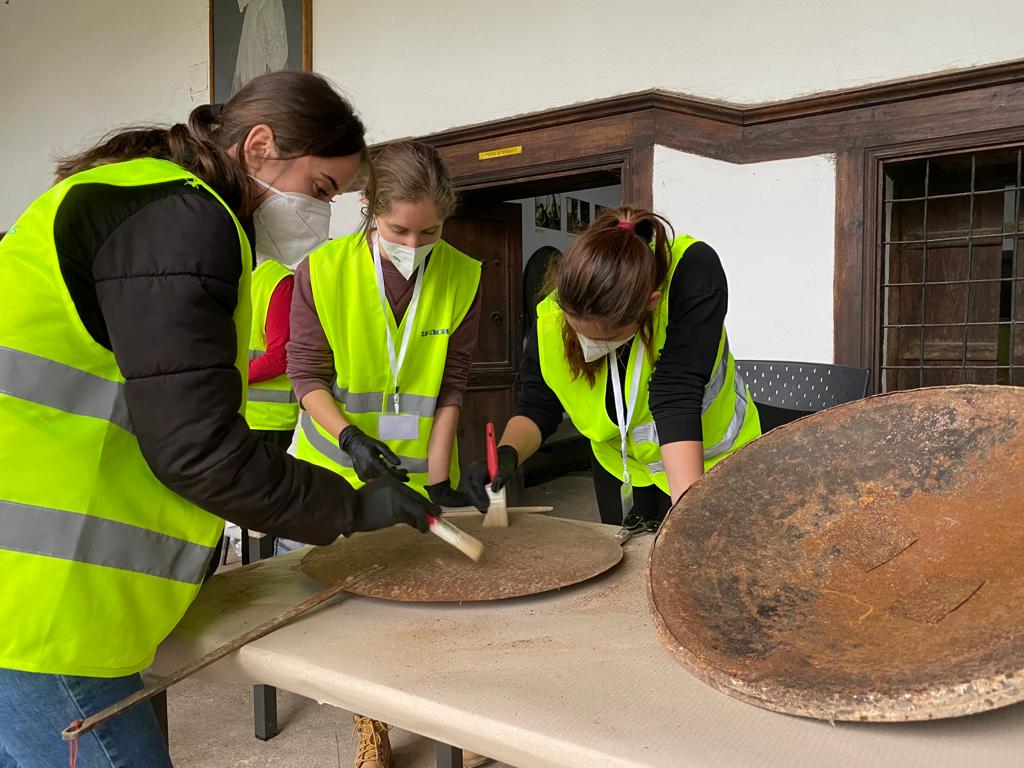22 April 2022 – How do you pack a museum? Ask Albanian students

For some of you it might sound like a strange question or the focus of one of those researches destined to become the next Ig Nobel prize winner. However, in our case, it was a real challenge faced by UNOPS in Albania engineering and cultural heritage team who were about to start works at the Kavaja Ethnographic Museum slated to be renovated under the EU4Culture programme, funded by the EU and implemented in close cooperation with the Ministry of Culture.
HOW DO YOU PACK A MUSEUM – VIDEO
Before commencing the works, more than 800 valuable objects, some of them 200 years old, had to be packed and stored to ensure that they are not damaged during the renovation process.
Apparently, there is a huge difference between packing a suitcase and packing a museum and there is no room for mistakes while handling unique historical artifacts that have an inestimable cultural value and historical significance for the people of Albania. Hence, in order to ensure that this process is done in line with the highest international standards, UNOPS in Albania invited professor Gabriela Krist, a renowned expert in the field from the Institute of Conservation of Vienna University of Applied Arts to lead a multicultural team of Albanian experts, museum staff members, students from the Tirana National University and Vienna Institute of conservation, and UNOPS engineers, who worked for a whole week together on making this challenging phase of a project a success. The process was closely monitored by the National Institute for Registry of Cultural Heritage.
“Conservation science and practice is a field that needs support to be further developed in Albania and engaging students from heritage studies alongside local museum experts in “learning-by-doing” workshops ensures that best practices and know-how will be sustained and will enhance national capacities in the cultural heritage preservation sphere” – noted Pamela Lama, Country Manager of the UNOPS in Albania.
“Having an opportunity to learn from the top experts in the field is invaluable for us. There are many nuances to take into account. For example, the wrapping paper should be acid-free, you have to envisage cushioning and securing the artifact to prevent damage while moving…Textiles can be very fragile and vulnerable to humidity, pests, insects, dust and mold. It is important to change the filler and take good care of the covers. There should be a system to constantly maintain the temperature and humidity levels. Once I understood all this, I understood how complex conservation is and how important it is to continue learning about it. Now I strongly believe that because of our work today our children will be able to learn from the assets we preserved ” noted – Mirjeta Blloshmi, a Cultural Heritage intern and one of the workshop participants.
“I was very impressed by the substantial cultural heritage you have in this country, from archaeological sites to ethnographic museums. I found it very useful that UNOPS is coordinating this project not only to repair earthquake damage but also to establish new concepts of interpretation, display and exhibition. In addition to repairing affected cultural sites, UNOPS is also working with experts to enhance museum standards. I believe this is extremely important for this country because tourism and especially cultural tourism will play an important role for economic development and in raising living standards” – pointed out Professor Gabriela Krist from the Institute of Conservation of Vienna University of Applied Arts.



